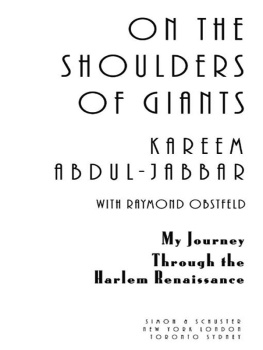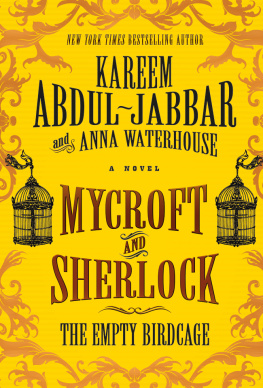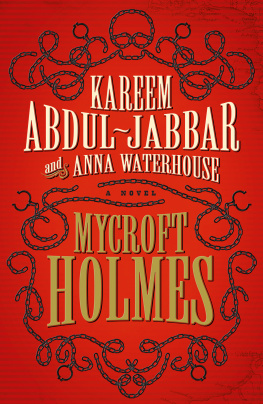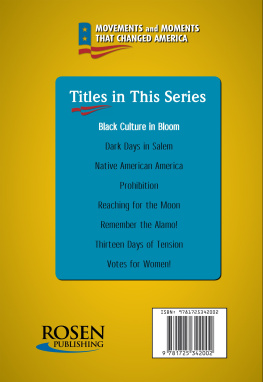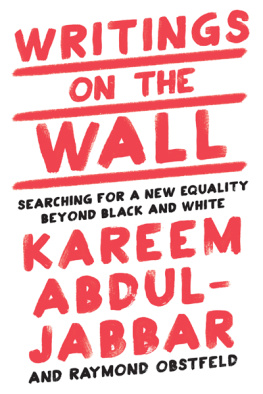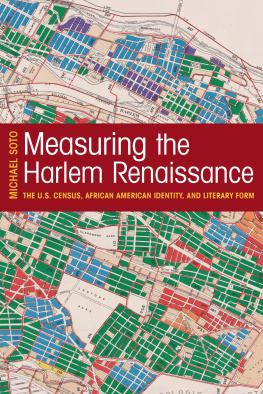Bibliography
Anderson, Jervis. This Was Harlem: 19001950. New York: Farrar Straus Giroux, 1982.
Anderson, Paul Allen. Deep River: Music and Memory in Harlem Renaissance Thought. Durham: Duke University Press, 2001.
Ashe, Jr., Arthur. A Hard Road to Glory: The African-American Athlete in Basketball. New York: Amistad, 1988.
Baker, Jr., Houston A. Modernism and the Harlem Renaissance. Chicago: University of Chicago Press, 1987.
Banks, Jr., William H., ed. Beloved Harlem: A Literary Tribute to Black Americas Most Famous Neighborhood, from the Classics to the Contemporary. New York: Harlem Moon, 2005.
Bontemps, Arna. The Harlem Renaissance Remembered: Essays Edited with a Memoir. New York: Dodd, Mead & Co., 1972.
Davis, Francis. The History of the Blues. New York: Hyperion, 1995.
Feather, Leonard. From Satchmo to Miles. New York: Stein and Day, 1972.
Floyd, Samuel A., ed. Black Music in the Harlem Renaissance. Knoxville: University of Tennessee Press, 1990.
Floyd, Samuel A. The Power of Black Music: Interpreting Its History from Africa to the United States. New York: Oxford University Press, 1995.
George, Nelson. Elevating the Game: Black Men and Basketball. Lincoln: University of Nebraska Press, 1992.
Gioia, Ted. The History of Jazz. New York: Oxford University Press, 1997.
Greenberg, Cheryl Lynn. Or Does It Explode? Black Harlem in the Great Depression. New York: Oxford University Press, 1991.
Haskins, Jim, et al. Black Stars of the Harlem Renaissance. New York: John Wiley & Sons, Inc., 1992.
Hill, Laban Carrick. Harlem Stomp! A Cultural History of the Harlem Renaissance. New York: Little, Brown and Company, 2003.
Huggins, Nathan Irvin. Harlem Renaissance. New York: Oxford University Press, 1971.
Jones, LeRoi. Black Music. New York: William Morrow, 1967.
Kitwana, Bakari. The Hip Hop Generation: Young Blacks and the Crisis in African American Culture. BasicCivitas Books, 2002.
Kuska, Bob. Hot Potato: How Washington and New York Gave Birth to Black Basketball and Changed Americas Game Forever. Charlottesville: University of Virginia Press, 2004.
Lapchick, Richard E. Smashing Barriers: Race and Sport in the New Millennium. New York: Madison Books, 2001.
Lewis, David Levering. The Portable Harlem Renaissance Reader. New York: Penguin Books, 1994.
Locke, Alain, ed. The New Negro: Voices of the Harlem Renaissance. New York: Touchstone, 1992.
Margolies, Edward. Native Sons: A Critical Study of Twentieth-century Negro American Authors. New York: J. B. Lippincott Company, 1968.
Oakley, Giles. The Devils Music: A History of the Blues. New York: Taplinger, 1976.
Oliver, Paul. Blues Fell This Morning: Meaning in the Blues, 2nd edition. Cambridge: Cambridge University Press, 1990.
Osofsky, Gilbert. Harlem: The Making of a Ghetto, Negro New York, 18901930. New York: Harper & Row, 1964.
Peterson, Robert W. Cages to Jump Shots: Pro Basketballs Early Years. Lincoln: University of Nebraska Press, 1990.
Ramsey, Jr., Guthrie P. Race Music: Black Cultures from BeBop to Hip-Hop. Berkeley: University of California Press, 2003.
Rayl, Susan J. The New York Renaissance Professional Black Basketball Team, 19231950. Diss. Pennsylvania State University, 1996. Ann Arbor: UMI, 1996. 9702370.
Southern, Eileen. The Music of Black Americans, 3rd edition. New York: W. W. Norton, 1997.
Spencer, Jon Michael. The New Negroes and Their Music: The Success of the Harlem Renaissance. Knoxville: University of Tennessee Press, 1997.
Thomas, Ron. They Cleared the Lane: The NBAs Black Pioneers. Lincoln: University of Nebraska Press, 2002.
Vincent, Theodore G., ed. Voices of a Black Nation: Political Journalism in the Harlem Renaissance. San Francisco: Ramparts Press, 1973.
Wall, Cheryl A. Women of the Harlem Renaissance. Bloomington: Indiana University Press, 1995.
Watson, Steve. The Harlem Renaissance: Hub of African-American Culture, 19201930. New York: Pantheon Books, 1995.
Wintz, Cary and Paul Finkelman, eds. Encyclopedia of the Harlem Renaissance. New York: Routledge, 2004.
Acknowledgments
I wish to thank all who helped get this project up and runninga list that must begin with the late Dr. John Clarke, who conceived the Harlem Youth Action Project. It was during my participation in HARYOU-ACT that I first learned of the enormous contribution black Americans have made to the United States and world culture. I must also acknowledge Mr. Arthur Schomburg, whose Harlem museum is a treasure trove of history that encompasses so many particulars of black achievement. I would also be remiss if I didnt give heartfelt thanks to my cowriter, Raymond Obstfeld, whose talent and dedication permeates every chapter of this book; and to my financial guru, Deborah Morales, whose day-to-day contribution and unerring energy greatly helped to lighten my load as we saw this sometimes daunting project to completion.
To my good friend Rafee Kamaal for sharing my dream and encouraging me to put in written form the story line that ended up as this book. Im also grateful to the films investors, who were willing to risk loss, so convinced were they that this vital piece of heritage be preserved. They include the Dreier family, Ozzie Silna, Michelle Brown, Michael Carabini, Grant Hill, Chris Webber, Erika Bjork, Stephon Marbury, Etan Thomas, Jerry Reinsdorf on behalf of the Chicago Bulls, Allison Weiss-Brady and Chip Brady, and Rodney Hunt. Thank you one and all for your friendship and support. A special thanks to Chad Dreier, the first to step up and offer me his hand in friendship, not to mention his business acumen. It has also been my good fortune to have the backing of Bob Costas and Dennis Gilbert, two dear friends who saw me through a difficult period of transition. To Herbie Hancock for his insightful musical genius and Spike Lee for his gracious guidance that helped make this dream a reality. To will.i.am for embracing our cultural heritage by integrating these musical insights into todays hip-hop culture. My art team, Dustin Tanalin and Jeremy Castro were invaluable for their creative and artistic contributions. Many thanks to my editor, Kerri Kolen, for helping put all the pieces together. And finally, I extend my gratitude to the NBA, the Basketball Hall of Fame, the NBA Players Association, the Chicago Bulls, and the Los Angeles Lakers for helping to spread the word throughout the basketball community that we are, all of us, truly standing on the shoulders of giants.
About the Authors
Recognized by Sports Illustrated and Time magazine as historys greatest basketball player (he is the NBAs all-time leading scorer), KAREEM ABDUL-JABBAR is also the author of several New York Times best sellers. His previous books include Giant Steps, Kareem, Black Profiles in Courage, A Season on the Reservation, and Brothers in Arms. Since his retirement as a player for the NBA, Kareem has worked as a special assistant coach for the Los Angeles Lakers and acted as a volunteer coach for children on the White Mountain Apache reservation in Whiteriver, Arizona. On the Shoulders of Giants is currently in production as a documentary film.
An associate professor of English at Orange Coast College, RAYMOND OBSTFELD is also the author of over forty books of fiction, poetry, and nonfiction, including studies of the Italian Renaissance, Napolon Bonaparte, and Moby-Dick.
Index
Abdul-Jabbar, Kareem: aspirations of awards and honors for childhood and youth of giants in life of as Harlem Renaissance Man name change for passions of personality of post-basketball career of and rewriting history role models for self-definition of self-education of self-pride/respect of skyhook of as team player at UCLA as writer See also specific topic

